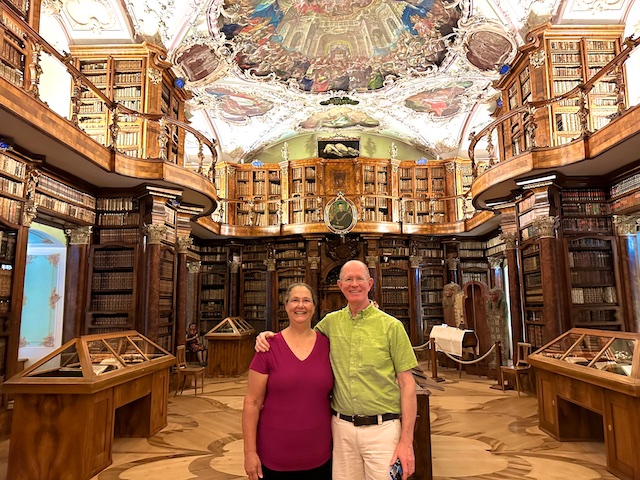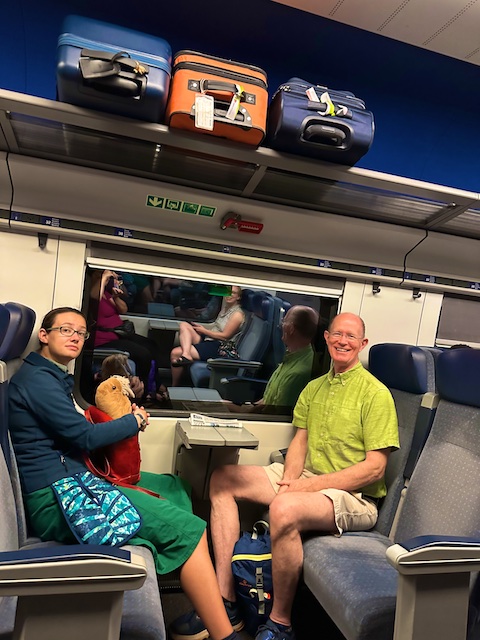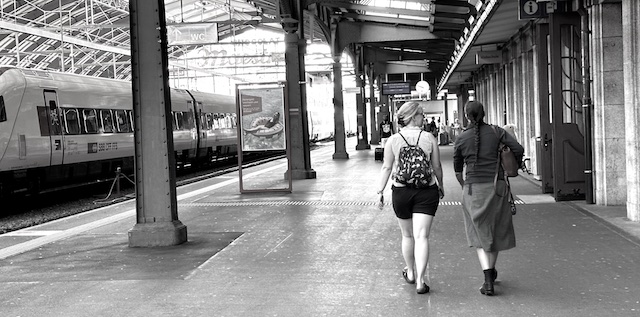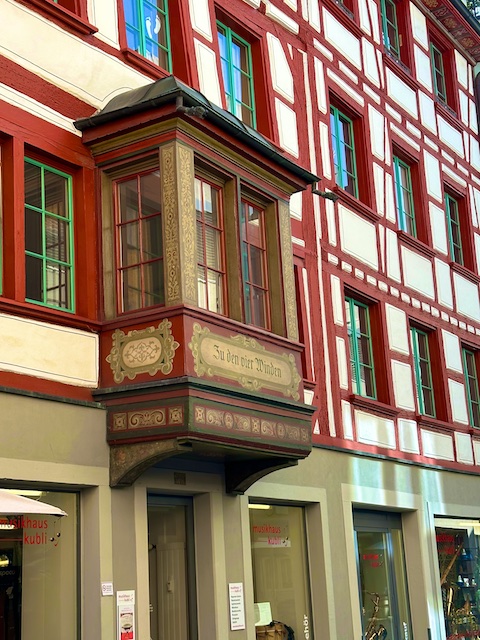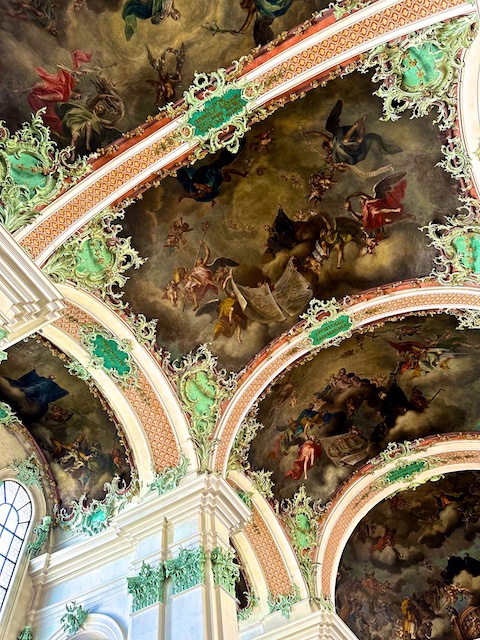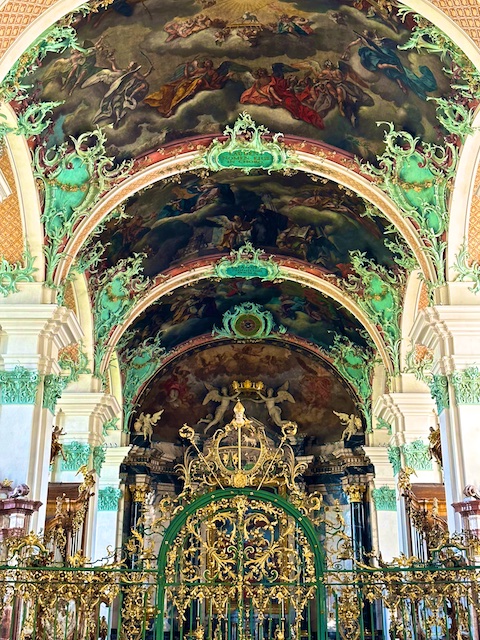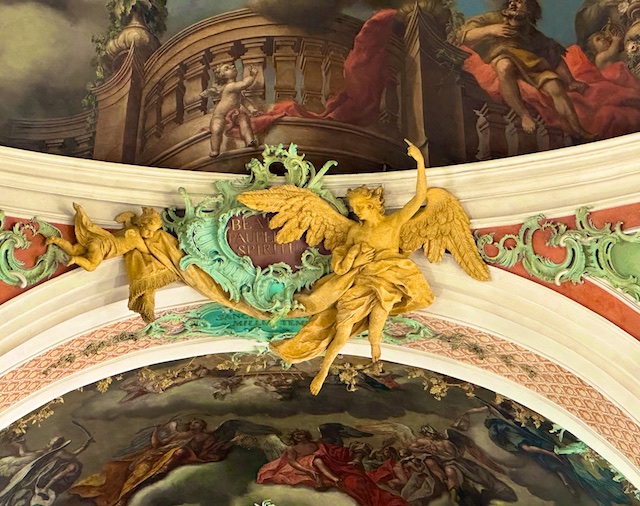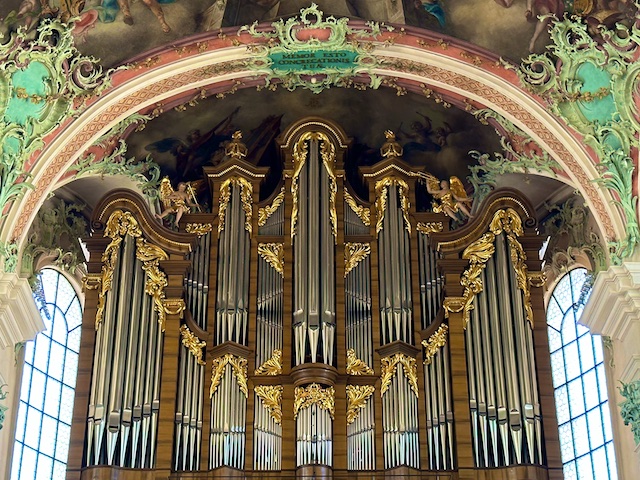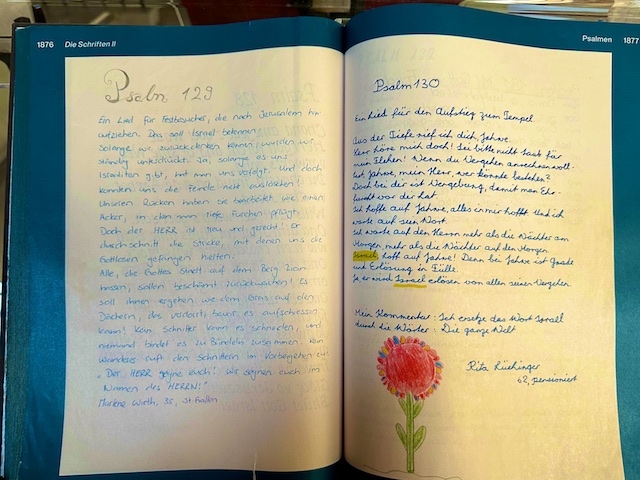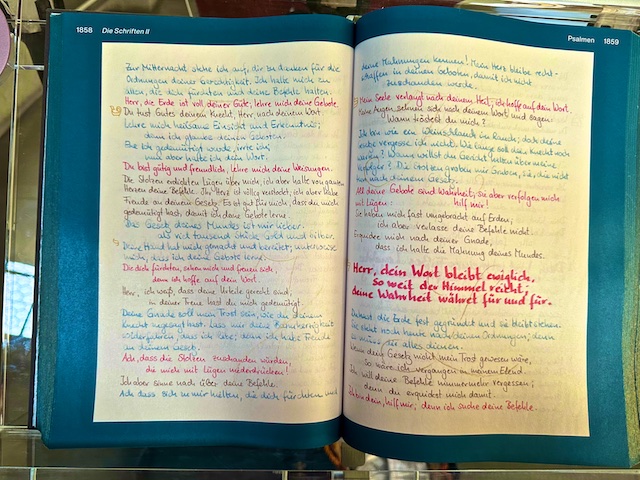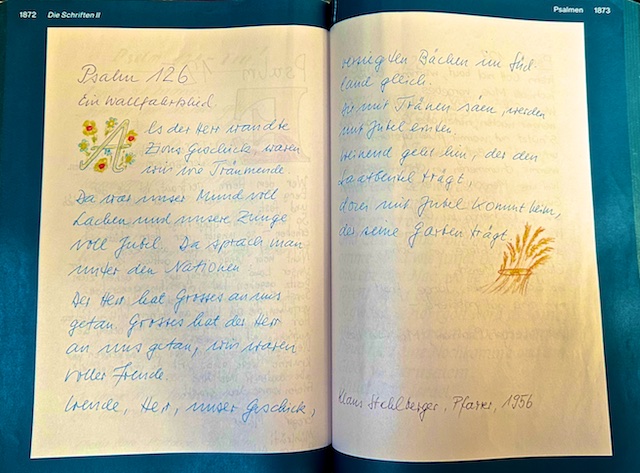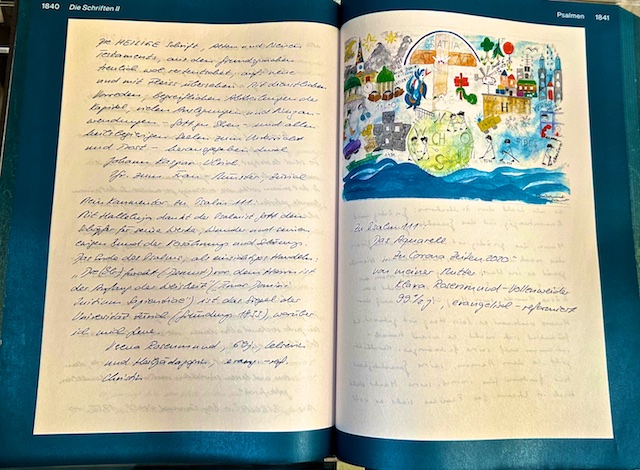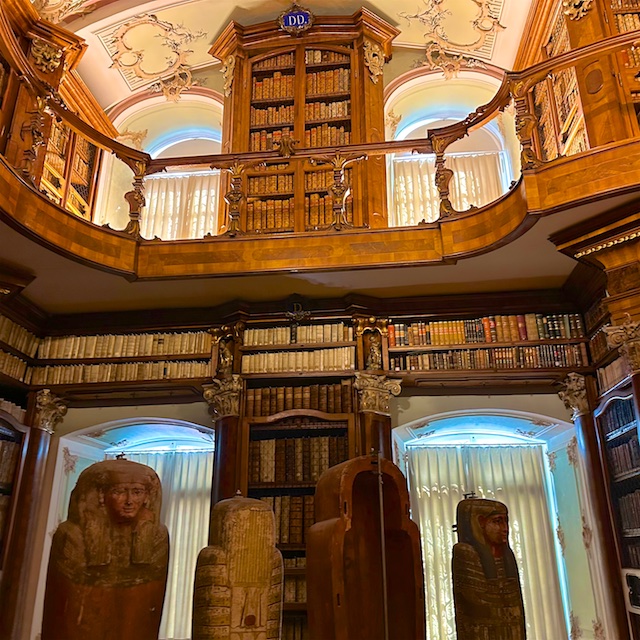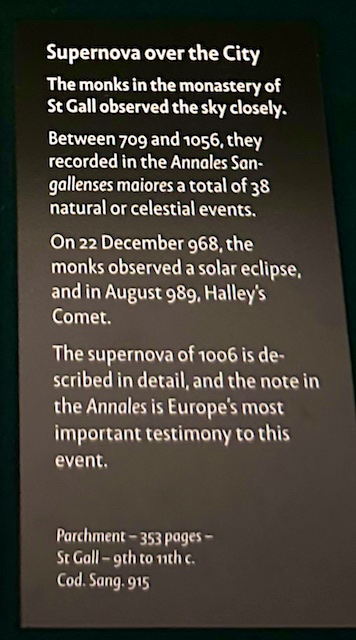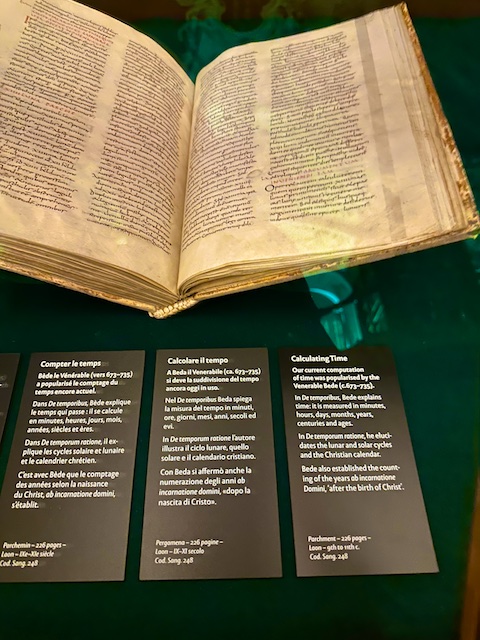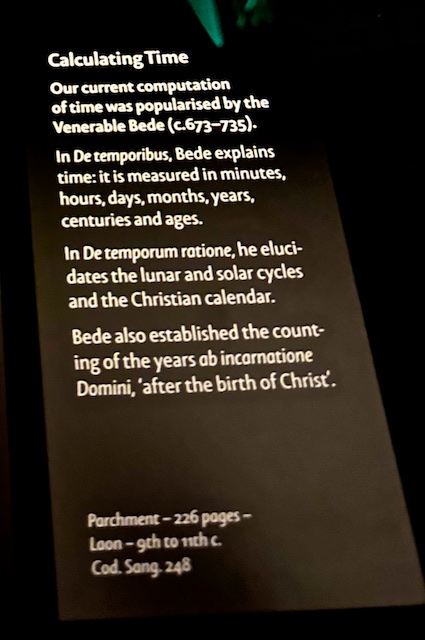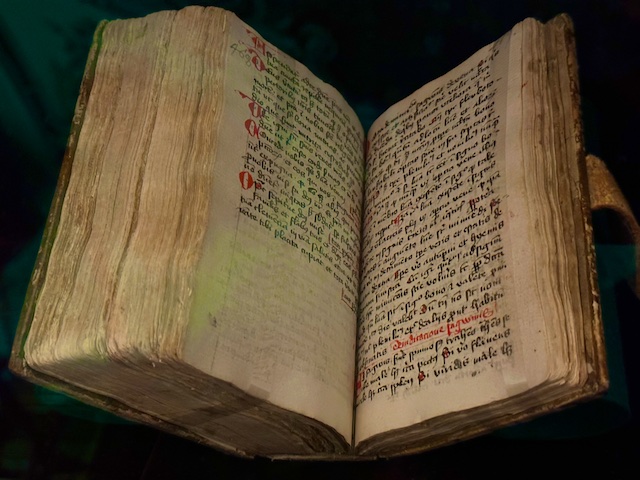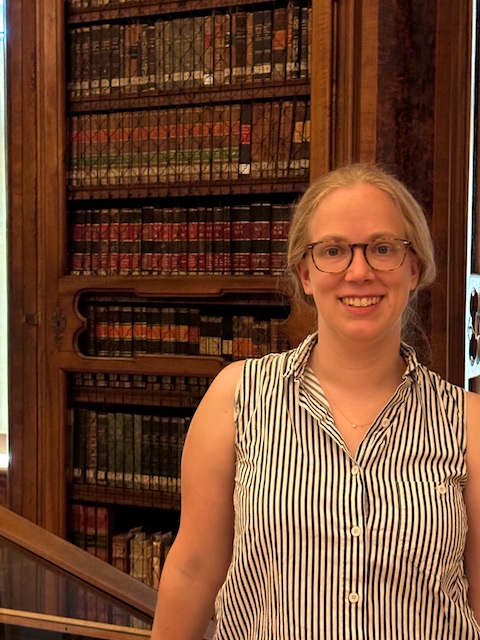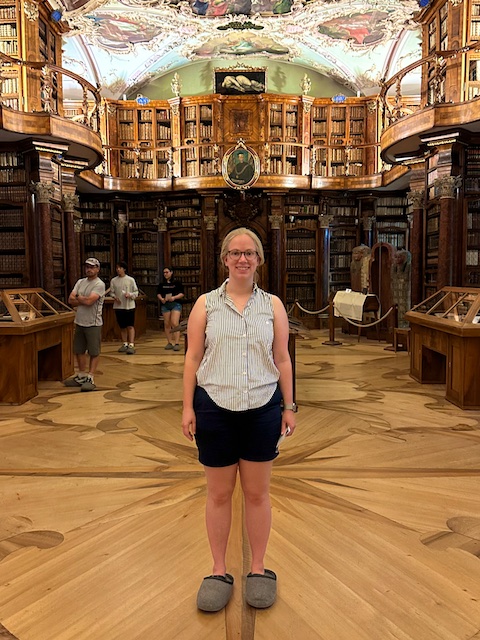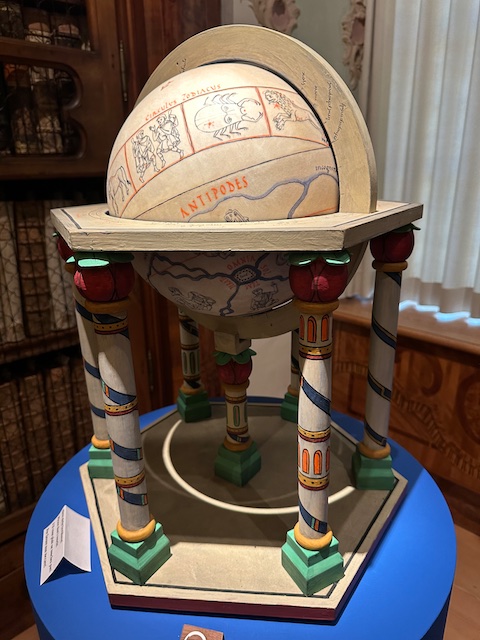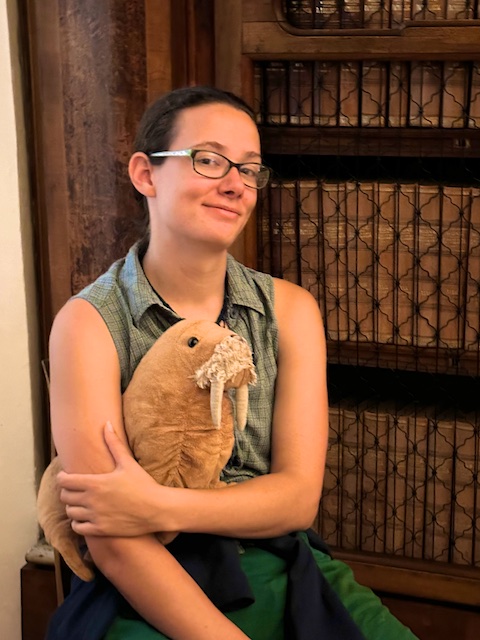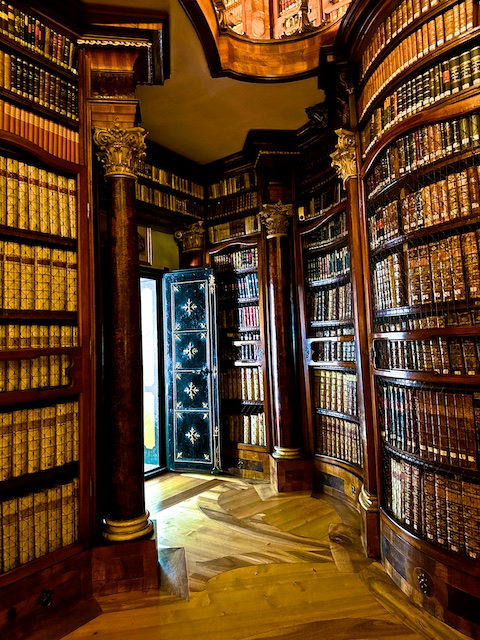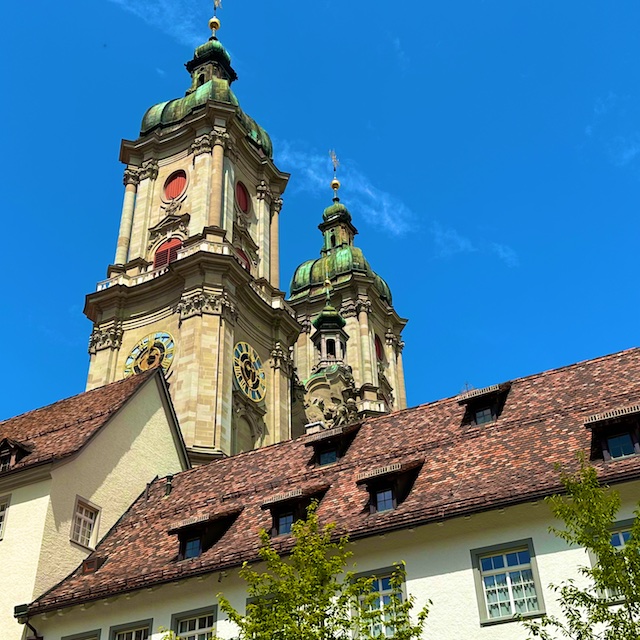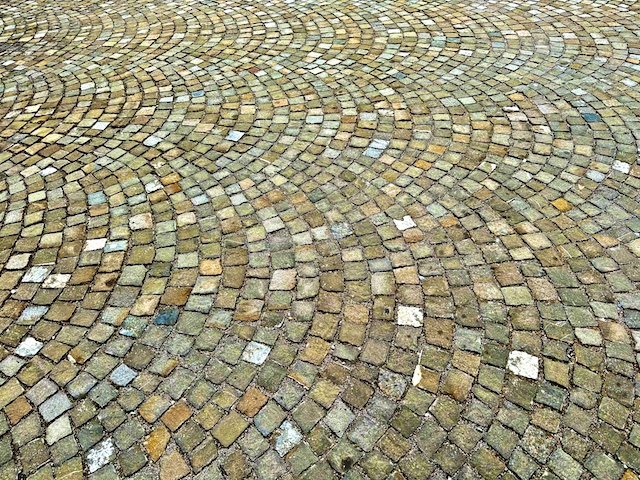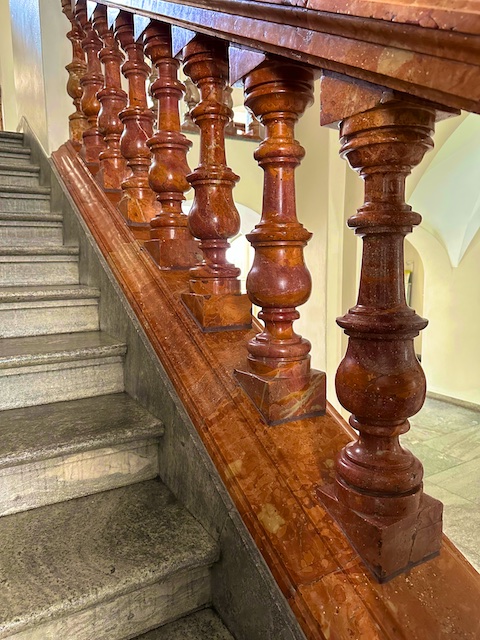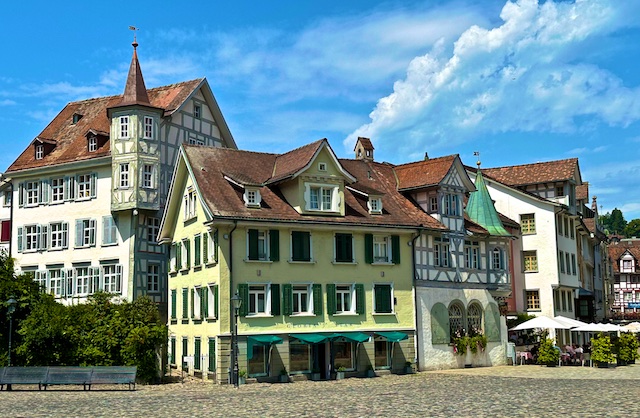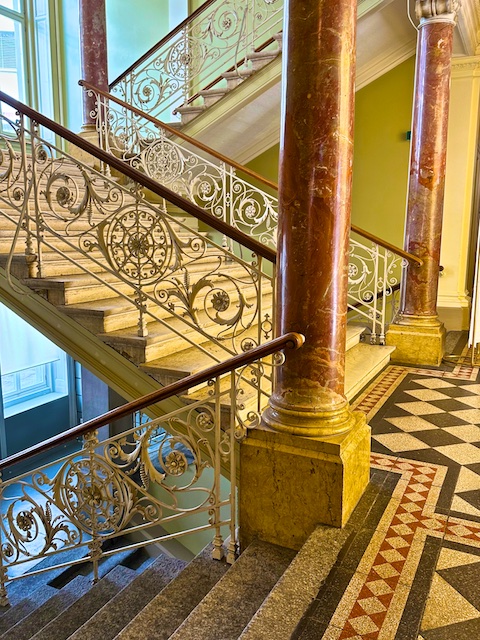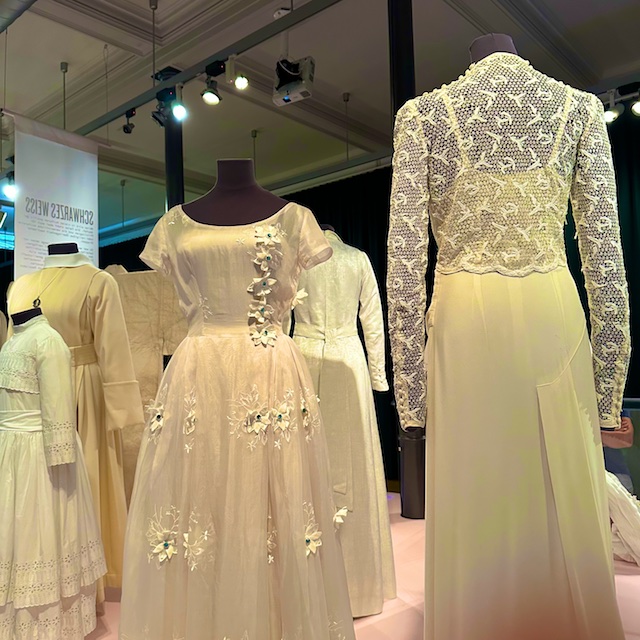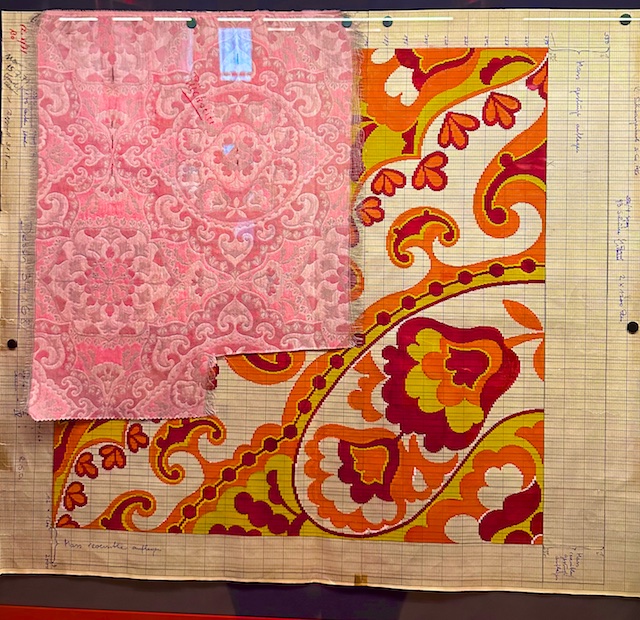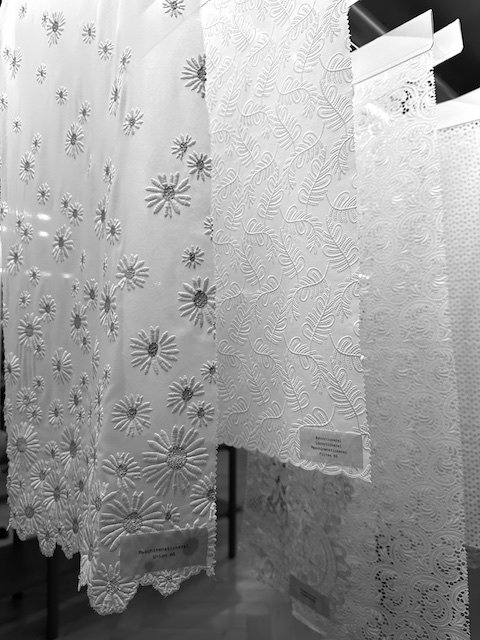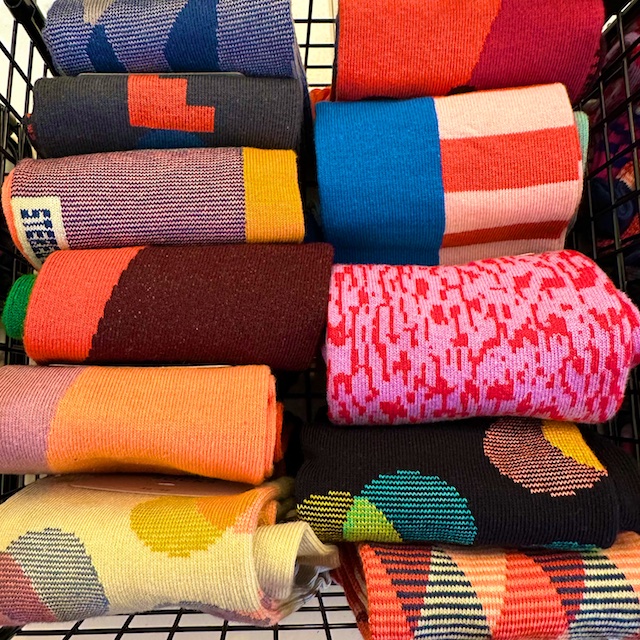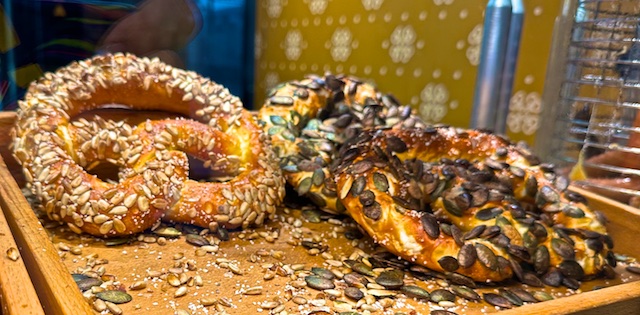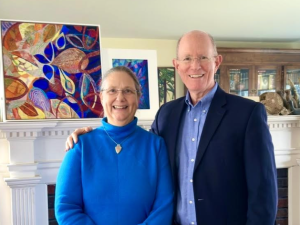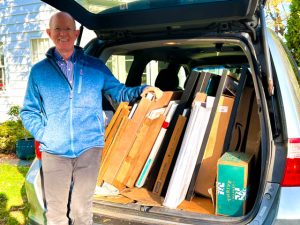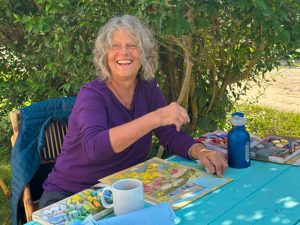This stop was our older daughter’s pick; she wanted to see this famous medieval library, which is home to the most comprehensive set of early medieval manuscripts. It’s rich collection has 160,000 books, 2100 of which are handwritten, and over 400 of them are over 1000 years old.
The Abbey here was founded in 747 and was an abbey for 1100 years. The library still has 400 manuscripts from the 9th century. In the 700’s and 800’s manuscripts were copied here by people who came from all over Europe to do so.
In 926 a nun (Saint Wiborada) saw a vision that the abbey was going to be attacked. She alerted everyone; they all got out and the books were hidden. She singlehandedly saved the library and everything in it. However, she herself remained and was killed during the attack. She was a remarkable character. She healed others spiritually, renounced all material possessions, and had herself walled in for the last few decades of her life. She was the first woman to be given sainthood.
The original monastery was demolished and rebuilt in 1755-1768, in its current overly ornate style.
We saw very old Bibles, a real mummy, the very over-the-top Rococo cathedral, manuals for bloodletting based on the astrological calendar, the book that defined time into days, hours, minutes, and seconds, an original book by the Venerable Bede, Constantine’s Bible, the book and page that described a supernova a 1000 years ago, a replica of the first globe (the original is in their locked up collection), and parchment literally stitched together where ripped. We had to put on slippers over our shoes to enter the library, so we would not scuff the inlaid floors.
In the cathedral, on display, was a Bible created during the recent Corona pandemic, where 1000 people each copied a chapter of the Bible. If was great to thumb through all the different handwriting, and to imagine those monks of long ago copying the whole thing over and over again very carefully, before the advent of the printing press.
The town of St. Gallen, which embraced the reformation in 1524, was since at odds with the Catholic abbey in their midst. The big industry in the town historically was lacemaking, so there is a textile museum there for that, which we visited as well.
We arrived in St Gallen by train from Zurich and left our suitcases in a locker in the train station, while we saw the cathedral, library, and textile museum. After retrieving our luggage, we continued on to Appenzell.
 Storage locker in the train station; all our luggage fit in one.
Storage locker in the train station; all our luggage fit in one.
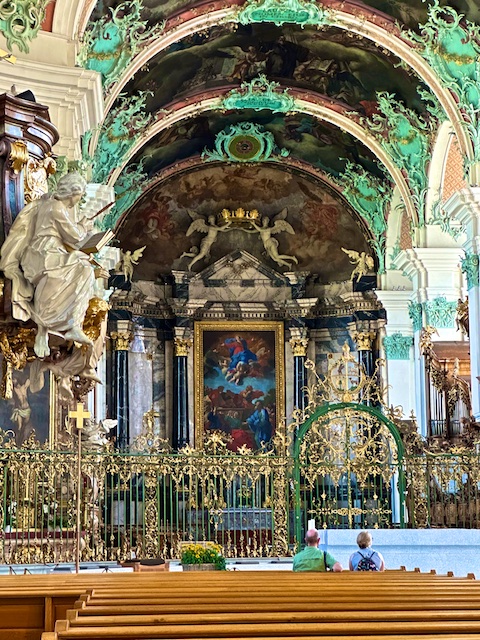 Nothing like a fence and a gate in church to keep people out.
Nothing like a fence and a gate in church to keep people out.
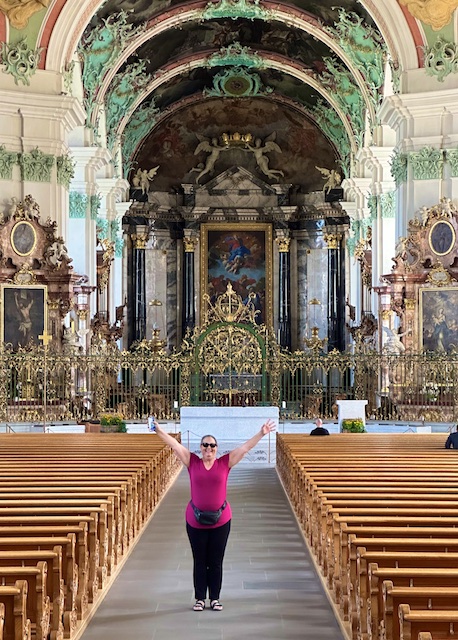 Not thrilled with the ornate style but happy to be exploring Switzerland.
Not thrilled with the ornate style but happy to be exploring Switzerland.
 Sone example pages below…
Sone example pages below…
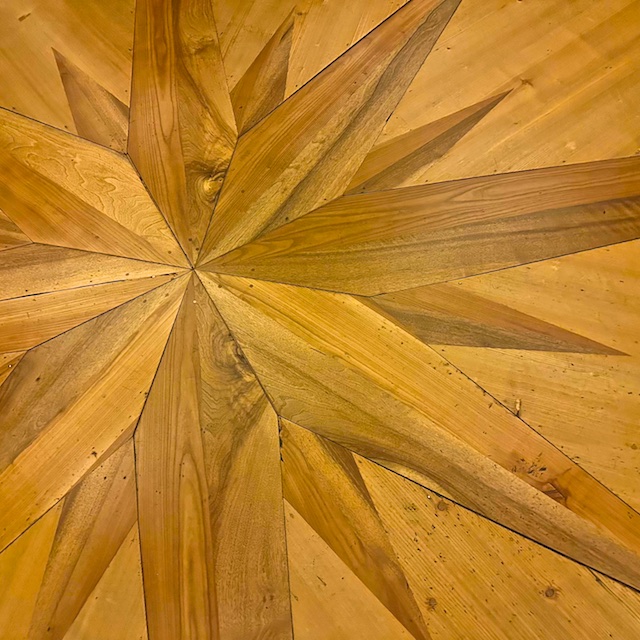 Inlaid floor
Inlaid floor
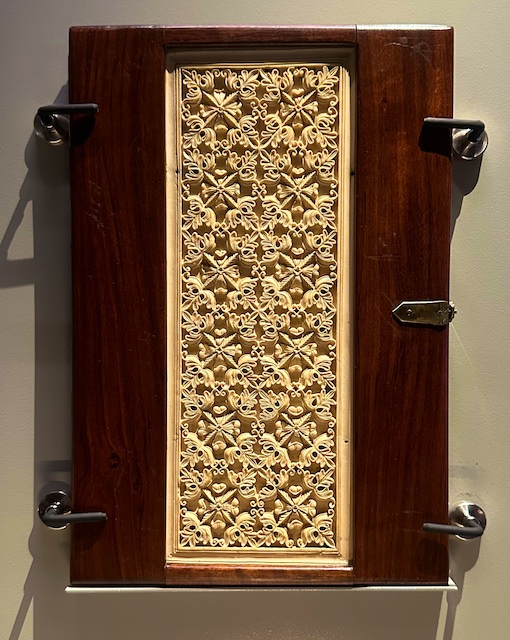 Constantine’s Bible with carved ivory.
Constantine’s Bible with carved ivory.
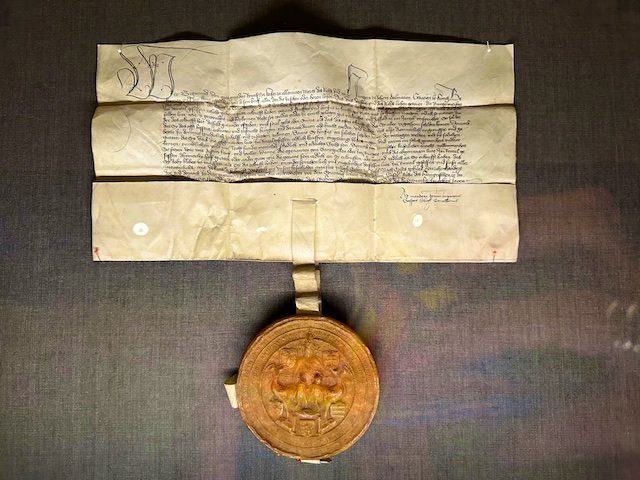 The original meaning of a “sealed letter.’
The original meaning of a “sealed letter.’
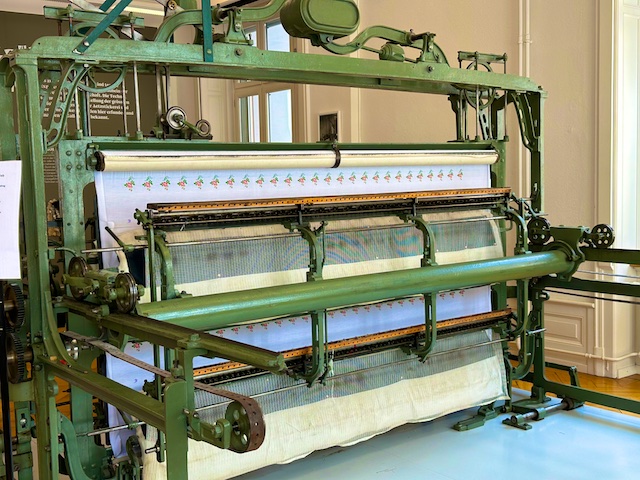 The first embroidery machine.
The first embroidery machine.
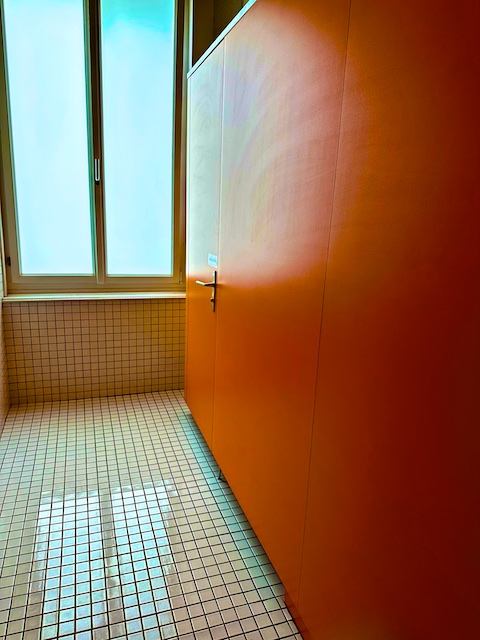 Sleek orange bathroom.
Sleek orange bathroom.
 Bobbin lace
Bobbin lace
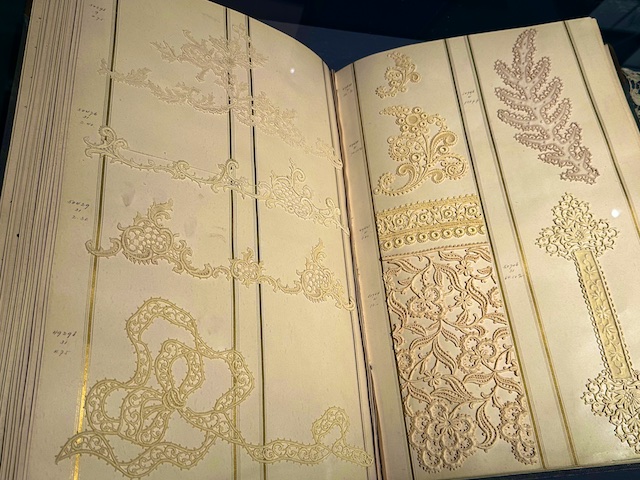 Lace was ordered from pattern books like this one.
Lace was ordered from pattern books like this one.
3 Comments
-
Wonderful trip.
-
Oooooo. Eeeee. What an education I receive whenever I open your blog! Today’s is filled with new information and such glorious photos. Thank you for sharing. I am thrilled to learn and travel vicariously through your blog postings.
-
I am almost breathless seeing these things !!!! Ohhh myyyy gossshhhh I wouldn’t be able to drag myself away !!!! Here in Australia an antique is anything that is just over 100 years old and we don’t really have much of that as the Westernised part of our country is only about 250 years old though the indigenous peoples were here for at least 60,000 before whites arrived … however nothing even remotely like these things were ever here. Mainly tools made from natural materials and cave paintings or carvings in rocks .
European history is artistically soooo so rich ! I loved your photos Polly !!!!! Show us more!!
